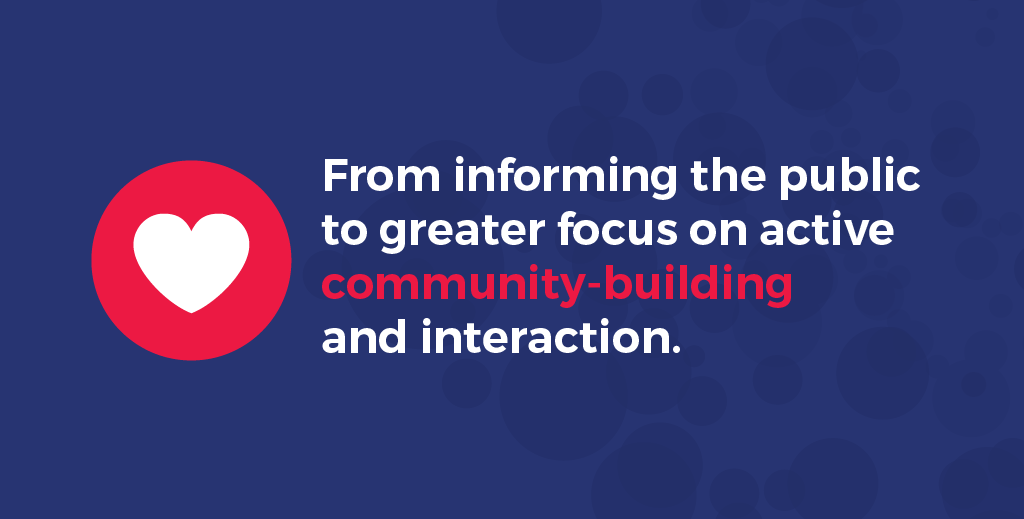Can the EU embrace the emotional language of social media in public policy communication?
12/03/2018 | Vienna University of Economics and Business, University of Bologna | Research | WP3

The increasing importance of social media is challenging the boundaries of public policy communication in the European Union. How can institutions deal with the immediacy of criticism and get out of the ivory tower? We just delivered a report on the role of new media in EU funded projects. Read more to find out the state of the art, our early suggestions and download the report curated by Vienna University of Economics and Business and the University of Bologna.
New media in public communication
Practitioners in the field of public policy communication agree on the need to expand predominance and effectiveness of social media as key channels of strategic communication, for central institutions, local and national managing authorities. In fact, their image of web platforms reaching out only to young people can be considered quite outdated.
Nowadays we are facing relevant changes in the segmentation of target audiences: groups of people sharing the same interests and characteristics can be easily profiled in detail, thanks to the amount of personal information they make available every day on the web. This development transformed the definition of communication target from that of 'general public' to that of 'communities', showing the shortcomings of considering the 'audience' as a homogeneous and monolithic concept. The consequences should be then taken into account also in public policy communication: a better analysis of how and to whom beneficiaries’ stories are told will affect the extent to which these stories successfully reach citizens; and, eventually, increase their engagement.
For the EU, coming out of the ivory tower deals not only with moving onto social media but with the way these channels are used. Our study offers an analysis of the state of the art in the communication of Cohesion Policy related to our case-study regions and to EU institutional accounts. Following the results, we have some early suggestions based on both the literature on the topic and the practitioners' work. A very interesting case and possibly a best practice emerged among them: the case of Calabria Region in Italy.
Main topics
We investigated several aspects of communicating Cohesion Policy over two of the most used social media: Facebook and Twitter.
First, we mapped the activity on Facebook pages of the Local Managing Authorities and we measured, for instance: the number of posts and likes generated on their pages; the contents of the most ‘liked‘ posts and comments and the opinions associated with the topics mostly used.
On Twitter, we explored the Cohesion Policy discourse, in particular, we looked at the users with most tweets and retweets and the most popular hashtags and mentions; the characteristics of the interaction network by looking at the re-tweeting behaviour of users and events that correspond to peaks of usage.
Highlights of the results
The results on the use of Facebook by LMAs are very heterogeneous: one of them doesn't have a page, others use it as a static website to share information and press releases; whereas one region has not only a dedicated page on Cohesion Policy but an organizational unit dedicated to communication. However, there is often a lack of focus on Cohesion Policy and on EU funded projects as topics in the pages' content. Regarding Twitter, the EU institutional accounts carry on an intense daily activity, yet this traffic stays in a closed circle and it doesn't effectively open up to citizens. In general, we see that the use of social media in Cohesion Policy's communication has still to unveil its full capacity in order to build the bridge between the EU and Europeans.
These findings pave the way for implications that should be kept in mind when planning communication strategies for Cohesion Policy in the future. We will clarify our suggestions along the PERCEIVE project's development and finalize them in a policy brief. The next step for Work Package 3 will be in June, with the publication of the "Report on the statistical analysis of the communication efforts' impact and effectiveness on citizens' awareness and appreciation for EU financed projects".
Do you want to read more? Download the Report here.
Do you want to read the full research paper? Go to the Public Deliverables' page.
Do you want us to keep you updated? Follow us on Facebook, Twitter, Linkedin and subscribe to our newsletter!
Project Updates
The Social Media Engagement Report (D.7.4) has been published!
by BAM! Strategie Culturali | 02/09/2019
Last month of PERCEIVE project!
by 01/08/2019
The project will end on 31 August, but we still have some insights and materials to share with you. Stay tuned!
Both Policy Briefs (D.7.5, D.7.6) are now online!
by University of Bologna | 01/07/2019




